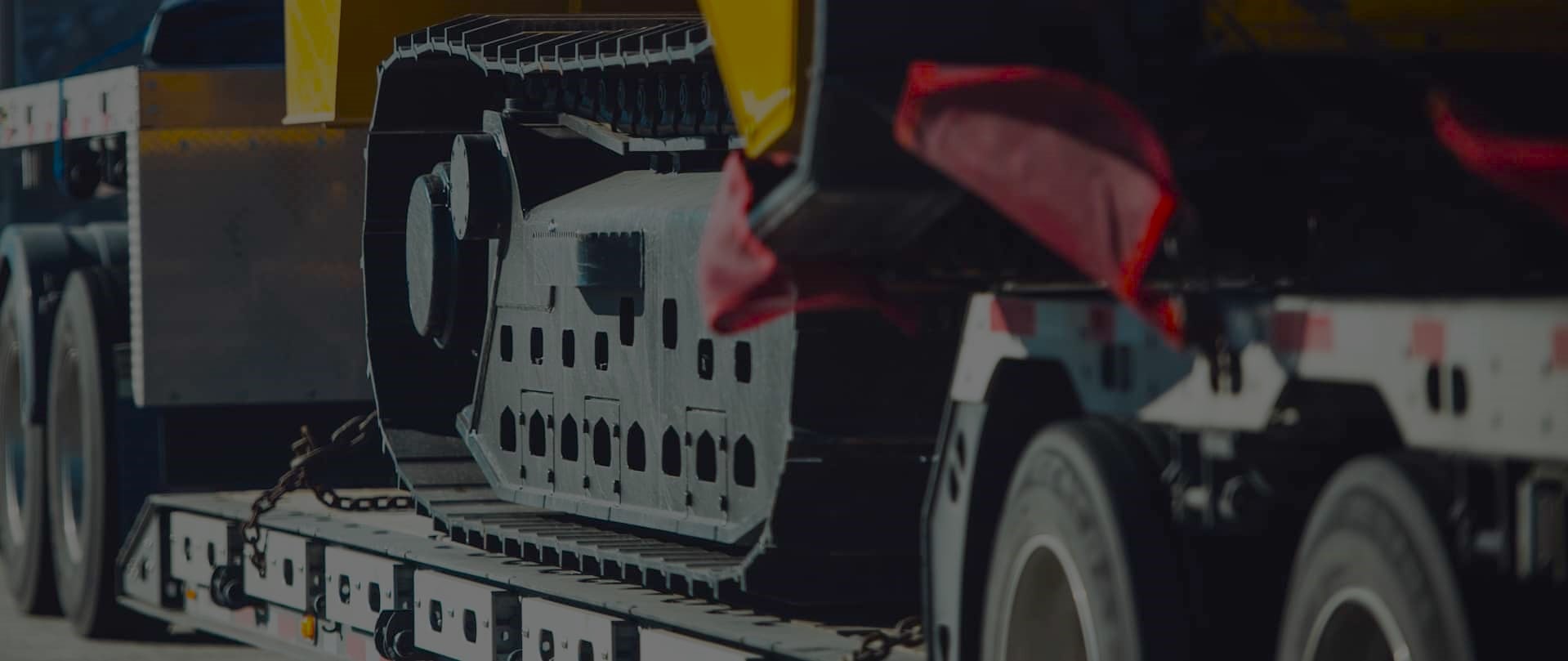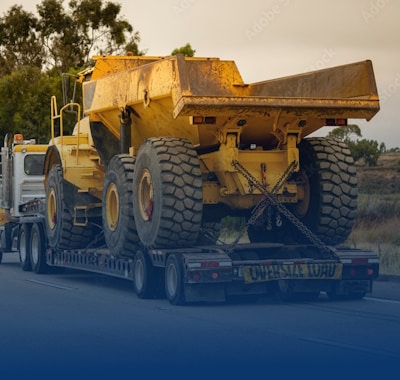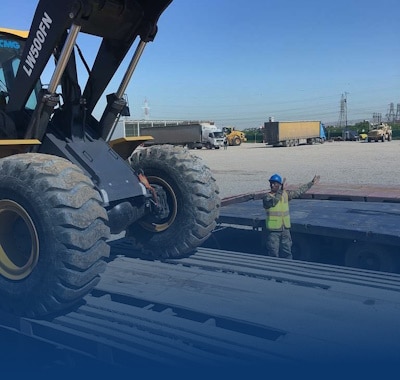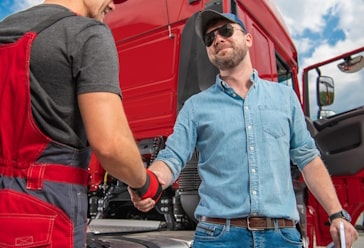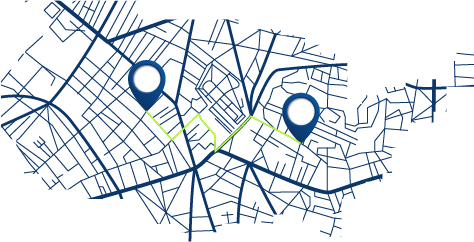Secure Transport Solutions for Helicopters & Aircraft
Freedom Heavy Haul can offer expedited Pickup and Delivery for any size shipment anywhere in the USA. Contact us today for No Hassle, No Pressure Pricing.
Transporting large helicopters and air crafts needs careful planning and skill. These valuable items must be handled safely to avoid damage. Companies like Heavy Haulers offer tailored solutions for moving aircraft parts. They make sure everything is done safely and follows the rules.
There are special challenges in moving big helicopters and planes. You have to deal with size limits and keeping fragile parts safe. You need the right tools and experts to get the job done right. Knowing these details helps owners keep their investments safe and on schedule.
Understanding the Complexities of Transporting Large Helicopters and Aircraft
Transporting helicopters and aircraft is a precise task. They are bigger, more fragile, and have strict rules. Companies that offer helicopter transportation services must handle logistics, safety, and rules carefully to deliver successfully.
Common Challenges in Aircraft Transportation
Some big challenges are:
- Navigating restricted airspace and busy flight paths
- Handling weather delays or changing routes
- Getting permits for crossing borders
One logistics manager said, “Every transport operation is a puzzle—one misstep risks delays or damage.”
Size and Weight Considerations
The size of these aircraft affects how they are moved. For example, a Boeing CH-47 Chinook helicopter is over 24,000 pounds. It needs strong trailers and checks for bridges or tunnels. Aircraft shipping solutions might involve taking apart rotors or wings to fit on roads or in the air.
Regulatory Requirements
Following rules is essential. The FAA and EASA have strict rules for securing loads, crew training, and protecting the environment. Here are some key rules:
| Agency | Key Requirement | Impact |
|---|---|---|
| FAA (USA) | Secure cargo with FAA-approved restraints | Prevents shifts during turbulence |
| EASA (EU) | Documentation for hazardous materials | Ensures safe transit through EU airspace |
| ICAO | Noise and emission limits | Reduces environmental footprint |
Reliable helicopter transportation services keep up with changing rules to avoid fines or stops. Working with experts in aircraft shipping solutions makes this complex process easier.
Key Methods for Aircraft Transport
Transporting helicopters and aircraft needs precision. You might move parts or whole units. The right method balances cost, speed, and safety. Here are the main strategies for oversized cargo and heavy lift air transport.
- Air Freight via Cargo Planes: Specialized carriers like Antonov Airlines use planes like the An-124 for heavy loads. These planes can carry whole helicopters or big parts. Air transport is fast but costs more and has limited access to airports.
- Ground Transport: Trucks and trailers handle oversized cargo for local moves. Companies like FedEx Custom Critical use strong trailers for fragile parts. Ground transport is cheaper but faces challenges like route limits and longer times.
- Hybrid Solutions: Mixing air and ground transport improves efficiency. For example, Boeing’s Dreamlifter flies parts to assembly plants, then trucks deliver them to the final site.
“Choosing between air and ground transport depends on urgency and budget. Heavy lift aircraft are best for long-distance travel, while ground teams solve local challenges.”
– Global Logistics Manager, DHL Industrial Projects
| Method | Cost | Speed | Safety | Best For |
|---|---|---|---|---|
| Air Freight | $$$ | Fast (1-3 days) | High | Overseas transport |
| Ground Transport | $$ | Moderate (5-10 days) | Moderate | Regional delivery |
| Hybrid | $$$-$$$$ | Variable | High | Complex projects |
Heavy lift air transport is often for military or aerospace needs that require quick action. For oversized cargo with sensitive equipment, ground teams focus on shock-absorbing packaging and GPS tracking. Always check the carrier’s certifications and insurance to reduce risks.
Advanced Safety Protocols in Aviation Transportation
Safety is key in every successful aircraft transport. It covers everything from keeping fragile parts safe to handling unpredictable weather. These steps are essential for helicopters and planes to arrive safely.
Securing Systems and Equipment
Advanced systems like hydraulic locks and custom cradles keep things in place. Sensors check the tightness in real time. For delicate parts, shock-absorbing materials reduce damage from shaking.
Every fastener is tested to handle more than usual travel forces.
Weather Monitoring Procedures
Teams track weather with satellite radar and predictive tools. They change routes to avoid bad weather. Here are some key tools they use:
| Technology | Purpose |
|---|---|
| Doppler Radar | Detect storm intensity |
| GPS Wind Mapping | Identify crosswind risks |
| Real-Time Pressure Sensors | Monitor cabin integrity |
Emergency Response Planning
They have plans for emergencies like mechanical failures. They practice for:
- Rapid rerouting using backup corridors
- Coordinating with local authorities for ground support
- Deploying on-site technicians for minor repairs
Companies like Freedom Heavy Haul follow these safety steps. They make sure everything is safe from start to finish.
Specialized Equipment for Helicopter Transport
Helicopter shipping companies use special tools for safe and efficient transport. They have custom trailers and shipping containers. These are made to handle the unique needs of moving aircraft.
Modern trailers have adjustable cradles for rotor blades and landing gear. This keeps everything stable during transport, even on bumpy roads. For example, Landoll’s heavy-duty trailers have hydraulic suspension to smooth out bumps.
Shipping containers also play a key role. They have climate control to keep the right humidity levels. Combi Equipment’s modular containers are used by companies like Sikorsky. They protect composite materials from extreme temperatures.
- Modular frames fit different helicopter sizes, from small Robinson R22s to big Chinooks.
- Anti-corrosion coatings protect against saltwater damage during sea transport.
- Remote monitoring sensors watch conditions in real time, warning of any issues.
“A single transport job can involve dismantling rotors, protecting exposed wiring, and securing 10-ton fuselages. Without tailored equipment, even minor road vibrations could cause costly damage.” – Airbus Logistics Manager
Companies often use a mix of these tools for big projects. In 2023, a European company moved six AW139 helicopters to Brazil. They used shock-absorbent containers on strong trailers. This method reduced damage and saved time, showing the importance of specialized equipment in aviation logistics.
Custom Crating and Packaging Solutions
Shipping helicopters and planes needs special crating to protect their size and fragility. In air freight, custom packaging is key for safe transport. It ensures components reach their destination without damage.
Materials Used in Aircraft Protection
Top-notch materials are the first defense. Aerospace-grade aluminum, moisture-resistant plywood, and shock-absorbing foams like 3M® are used. For delicate parts, anti-static wraps and coatings prevent harm.
- Extreme pressure changes during flight
- Temperature fluctuations from -40°F to 120°F
- Vibrations exceeding 10,000 RPM
“A single dent in a rotor blade can ground a helicopter for weeks. Proper crating isn’t just protection—it’s cost prevention,” notes James Carter, lead engineer at Atlas Global Logistics.
Environmental Control Systems
Shipping oversized cargo often means crossing different climates. Systems like Thermo King’s SmartFresh™ keep the crate’s environment stable. Desiccant packs and sensors monitor humidity and temperature, preventing damage.
Impact Prevention Measures
Multiple layers of cushioning protect against rough handling. Honeywell’s Viscoelastic Memory Foam fits to shapes, and steel-reinforced guards absorb shocks. Custom cradles with hydraulic suspension protect rotor blades. GPS-tracked crates, like DHL Aviation’s, can change routes to avoid turbulence.
International Transport Regulations and Compliance
Shipping large helicopters and air crafts across borders needs strict rules. Each country has its own set of rules, from safety checks to customs papers. Breaking these rules can lead to delays, fines, or even stopping the shipment. Companies moving helicopters must follow rules from the International Civil Aviation Organization (ICAO) and the European Union Aviation Safety Agency (EASA).
“Compliance isn’t optional—it’s the backbone of safe, efficient global operations,” states a senior ICAO logistics advisor.
To stay compliant, follow these steps:
- Check import and export permits for each place
- Follow airworthiness rules from the FAA or EASA
- Get certifications for hazardous materials if needed
| Region | Regulatory Body | Focus Areas |
|---|---|---|
| North America | FAA, Transport Canada | Safety inspections, emissions standards |
| European Union | EASA | Noise regulations, part marking |
| Asia-Pacific | JCAB, DGCA | Customs clearance, tariff compliance |
| Middle East | GCAA | Security protocols, route approvals |
Helicopter transport services often work with local groups to check papers ahead of time. They use systems like ICAO Annex 6 for tracking shipments. This keeps everything on track and follows the latest global rules.
Cost Factors in Aircraft Transportation
Planning the budget for moving aircraft is complex. It involves many variables, like the type of aircraft and the distance it needs to travel. Insurance, distance, and service fees are the main cost factors. Understanding these early helps in managing oversized cargo logistics smoothly.
Insurance Requirements
Insurance is key to protect against damage, theft, or delays. Policies depend on the cargo’s value, transport method, and risk. There are different types of coverage:
- All-risk (covers unforeseen events)
- Total loss (replaces entire asset)
- Third-party liability (damage to external property)
Insurance rates usually fall between 1% to 5% of the cargo’s value. Working with companies like Lloyd’s of London or AIG can help tailor policies.
Distance and Route Pricing
Longer routes mean higher costs for fuel, labor, and permits. Remote areas or airspace restrictions can lead to detours. For instance, moving a helicopter from Texas to Germany costs 20-30% more than domestic flights.
Additional Service Fees
There are often hidden costs, such as:
- Customs clearance delays ($150–$500/hour)
- Emergency landing storage fees ($2,000–$10,000/week)
- Oversize load permits ($200–$1,500 per state)
“Partnering with experienced carriers reduces unexpected fees. They negotiate permits and optimize routes upfront.” — Cargo Logistics Manager, DHL Aviation
| Cost Factor | Description | Example | Average Impact |
|---|---|---|---|
| Insurance | Risk-based coverage | $50M helicopter policy | 2–5% of value |
| Route Complexity | Fuel, permits, detours | Europe to Asia transit | +15–25% |
| Special Handling | Customs, storage | Brazilian import tax | $8,000–$20,000 |
Planning ahead with certified providers can avoid surprises. Many companies offer discounts for bundling services. This includes aircraft shipping solutions and oversized cargo logistics.
Preparation and Documentation Requirements
For heavy lift air transportation, preparation is key. Detailed documents are essential for safety and smooth operations. A missing form can cause delays, wasting time and money.
Here are the main documents needed for specialized aircraft transport:
- Customs declarations with detailed cargo information
- Certificates of airworthiness from licensed inspectors
- Weight distribution reports approved by engineers
“Every component must be tracked. Digital manifests replaced paper logs years ago, but accuracy remains non-negotiable.” – Boeing Global Services
Companies like Airbus Defence and Space use checklists to make things easier. These checklists cover:
- Pre-transport inspections (72 hours before flight)
- Real-time updates with tools like Samsara or Honeywell Forge
- Post-delivery audits to find ways to improve
| Document Type | Purpose | Example |
|---|---|---|
| Export Licenses | Legal permission for moving goods across borders | U.S. Department of Commerce BIS-711 |
| Insurance Certificates | Covers risks during transport | Allianz Global Aviation Policy |
| Dangerous Goods Notes | Follows safety rules for hazardous materials | IATA Dangerous Goods Regulations |
Projects with Antonov An-124 need extra permits. Volga-Dnepr Group requires temperature logs for sensitive items. Kalitta Air focuses on fuel forecasts for long trips.
Specialized aircraft transport relies on clear information. Digital tools like Flexport or CargoWise keep all data in one place. This makes it easy to check shipment history and compliance. Regular training helps teams stay up-to-date with new rules.
Route Planning and Logistics Coordination
Planning routes well helps helicopters and planes get to their destinations safely and on time. Companies like FedEx Custom Critical and Chapman Freeborn focus on detailed maps. They consider things like airspace rules, fuel stops, and what’s available on the ground. This way, they avoid delays and keep cargo safe.
Timeline Development
Creating good timelines needs teamwork between pilots, ground teams, and air traffic control. Important things to think about are:
- Weather that might change flight plans
- Availability of special transport gear
- Checks needed during the flight
Teams use smart analytics to adjust plans as needed. This helps them arrive on time, even with unexpected issues.
Customs Clearance Procedures
Shipping across borders means following strict rules. Companies team up with brokers like Livingston International. They handle things like tariffs, safety checks, and who gets to skip duties. They use digital tools like SAP Logistics to get documents ready ahead of time.
Communication Protocols
Keeping everyone updated in real-time is key. Tools like Trimble Transportation help with GPS tracking and alerts for changes. Here’s how different companies communicate:
| Factor | Aircraft Delivery Service | Helicopter Shipping Companies |
|---|---|---|
| Primary Routes | Transcontinental corridors | Regional or remote areas |
| Documentation Needs | FAA/EASA compliance reports | Local airspace permits |
| Communication Methods | Satellite uplinks | VHF radio networks |
Using the latest tech and tested methods, teams make sure cargo moves smoothly from hangar to destination.
Technology in Modern Aircraft Transport
Modern technology has changed air freight for oversized cargo a lot. It makes moving large helicopters and air crafts more precise and reliable. Companies like Freedom Heavy Haul use these advancements to make their work better and safer.
GPS Tracking Systems
GPS is key for keeping track of oversized cargo. It gives updates on where it is, how fast it’s going, and if it’s taking a wrong turn. This helps follow rules in the air and avoid delays.
- Geofencing alerts for unauthorized route changes
- Predictive analytics for weather or traffic disruptions
- Secure data sharing with logistics teams
Real-time Monitoring Solutions
Real-time sensors in the transport equipment watch things like vibration and temperature. They warn the crew about any problems, like changes in cargo weight. This keeps big helicopters and air crafts safe and their parts in good shape. Automated reporting tools also make it easier to follow rules for shipping across borders.
“Integrating real-time data transforms aircraft transport from a logistical challenge into a controlled, predictable process.”
By combining GPS with quick data analysis, air freight for oversized cargo is safer and more efficient. These tools help teams react fast, cutting down on risks and keeping to tight schedules.
Selecting a Qualified Transport Provider
Finding the right partner for helicopter or aircraft transport is key. Not all providers are equal, given the high value of the cargo. Look for certifications like FAA compliance or IATA accreditation. These show they follow strict standards.
“A provider’s track record in managing complex logistics defines their reliability. Always request case studies or client testimonials to gauge their capability,” advises a senior logistics manager at a leading aerospace firm.
Important factors to consider include:
- Experience with specialized equipment: They should know how to handle cranes, custom rigging, and climate-controlled storage.
- Global network access: A good provider has connections to international hubs to make customs easier and faster.
- Transparent communication: They should keep you updated with GPS tracking, so you know where your item is at all times.
Insurance is a must. Make sure they cover damage, theft, and unexpected weather issues. For shipping aircraft, ask about extra services like on-site assembly or disassembly. Companies like Boeing Global Services or Airbus Transport International might offer special packages.
Lastly, compare prices. While cost is important, very low prices might mean they’re cutting corners. Choose a balance between price and quality for a smooth transport experience.
Taking the Next Step in Securing Your Aircraft’s Journey
Securing your helicopter or aircraft for transport needs careful planning. Look at route analysis, regulatory rules, and ways to reduce risks. Working with certified experts in heavy lift air transport is key.
Use safety steps like strong crating and GPS tracking to protect your assets. Make sure your plans fit with logistics teams to handle customs or weather issues. Keeping in touch with your team helps avoid problems.
Choose transport firms with a good track record in oversized cargo. Ask for detailed quotes that include special gear, insurance, and backup plans. Look at examples from Boeing or Airbus to see what’s possible.
Do a pre-move check to make sure everything is right. Use IATA checklists to make things smoother. Book your move early to get the best times.
Good planning makes moving complex items easier. Focus on safety, following rules, and working with experts. This keeps your aircraft safe from start to finish.
